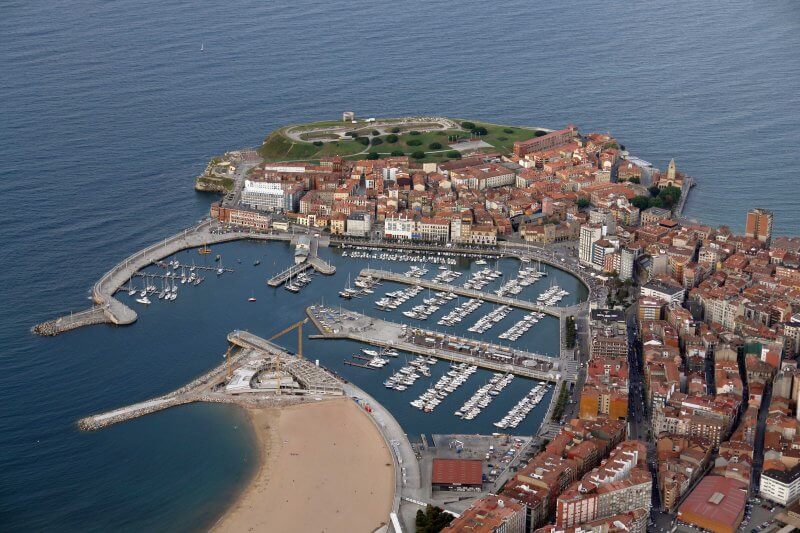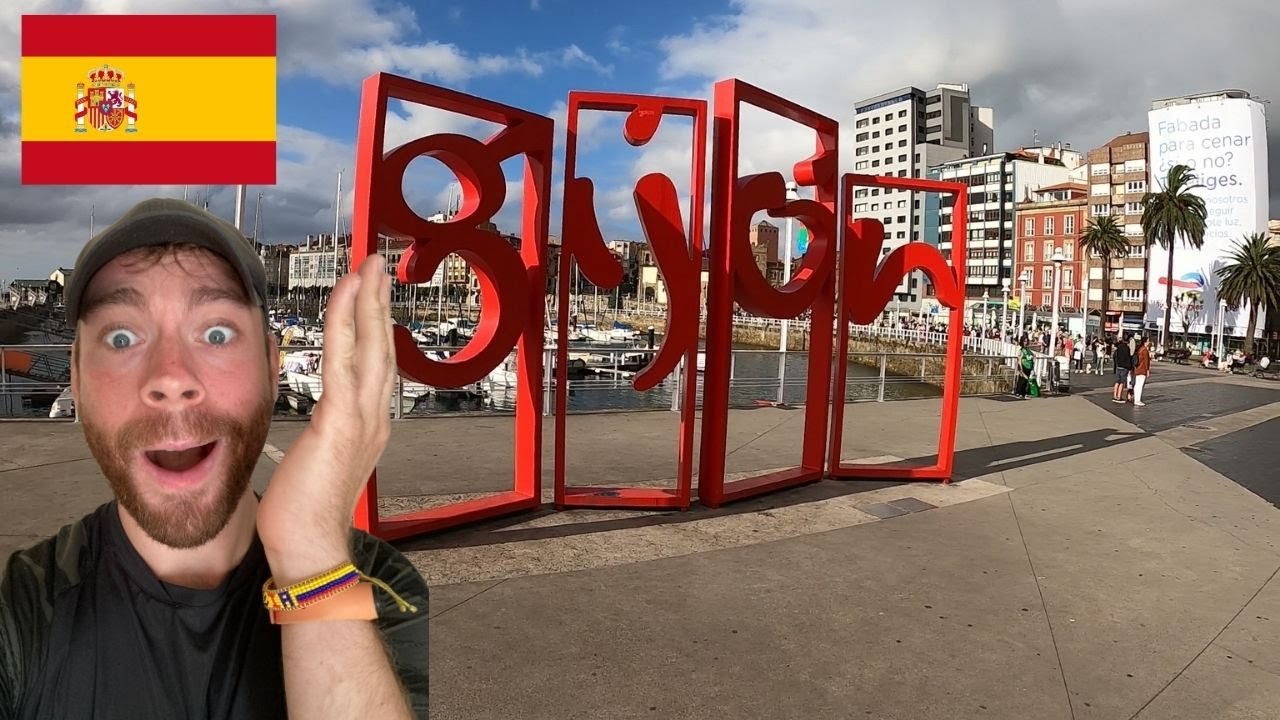Gijon, Spain – a small port town in the northern part of the country, known as the capital of navigation and one of the centers of industry. The population is 280 000 people. The area of the city is 181.7 km2.
Gijon is located in the center of the Asturian coast, with Carreno and Siero nearby. Interestingly, the city’s history dates back to the Roman Empire, when it was home to one of the country’s largest ports. In those days, the city was called “Khihiya”.
Gijon, like other cities in Spain, is rapidly developing, but there are still a lot more historical buildings here than glass skyscrapers and modern offices. There are not as many tourists here as in Barcelona or Madrid, so this city is ideal for lovers of peace and quiet.
Attractions
There are few attractions in Gijon, but some of them deserve no less attention than similar ones in Barcelona or Madrid.
Laboral Ciudad de la Cultura
Laboral Ciudad de la Cultura is the largest building in Spain (270,000 sq. m.) and the most important of those built in the 20th century (1945-1956).
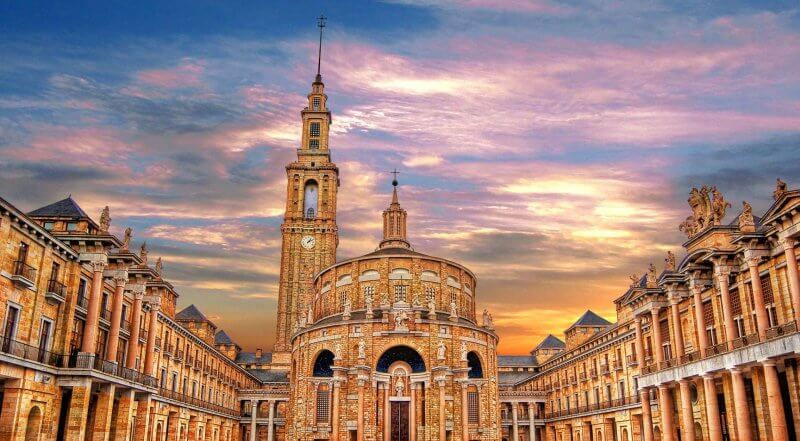
The complex consists of the following parts::
- The main building. Designed by Luis Moya, who created it in the likeness of the Parthenon. The architect preferred that the main gate face away from the city, so that visitors coming from Gijon would have to walk around the university from all sides and admire its facade.
- The courtyard is surrounded on all sides by the university walls, and its area is no more than 150 sq. m.
- The church is the most important attraction of the complex. It is the largest temple in the world with an elliptical floor. At the top is a huge dome weighing 2,300 tons. The building is not used for its intended purpose, and exhibitions are regularly held here.
- The Laboratory University Tower is the tallest building in Austria and offers an incredible view of the surrounding area. There is no need to climb the stairs – a high-speed elevator will take tourists to the top.
- The theater is the main cultural attraction of Gijon in Spain. Interestingly, it was built in 1945, and it was the first theater in the world with an air-conditioning system. The hall is designed for 1500 people.
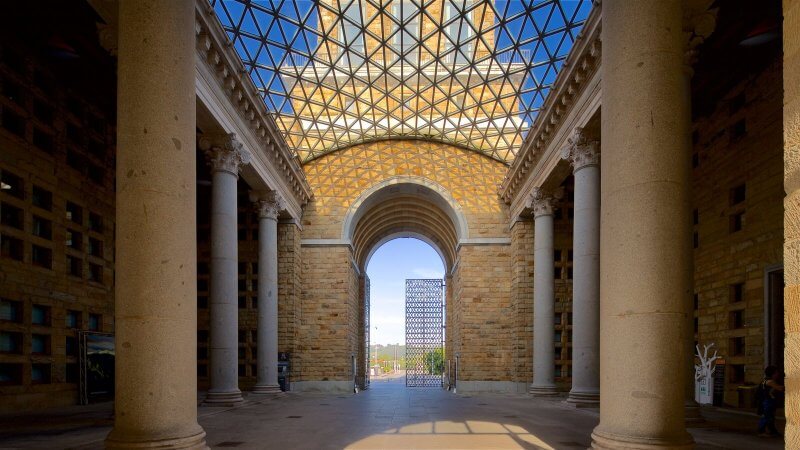
Special attention should be paid to the observation deck, because most tourists come here because of it. It is not as high as you might think at first glance, but it offers a really beautiful view of the city of Gijon, the Laboral Ciudad de la Cultura complex and the surrounding mountains. The elevator goes up as it fills up, and the amount of time at the top of the tower is unlimited.
- Location: Calle Luis Moya Blanco, 261, 33203 Gijón, Asturias, Spain.
- Opening hours: 10.00-18.00.
- Price: 2 euros.
- Official website: http://www.laboralciudaddelacultura.com
Jardin Botanico Atlantico
The Atlantic Botanical Garden is one of the most unique attractions in Gijon. Unlike other gardens and parks in Spain, there is also a museum component, so visiting the botanical garden will be interesting for children.
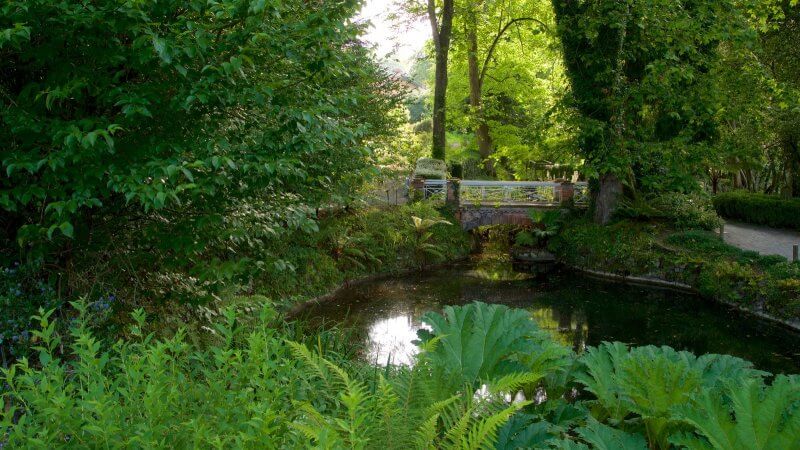
For a better perception of the exposition and plants, the garden is divided into 4 large parts:
- “Cantabrian Environment”. In this area, you can explore the flora and fauna of the Cantabrian Mountains, meet exotic birds and enjoy the beautiful views that open from several viewing platforms.
- “Plant Factory” is a full-fledged museum exhibition, where you can learn and see those plants that used to be wild, but later became garden and indoor plants. Also on the stands you will see several recipes for medicinal infusions of herbs and learn interesting stories about how plants were exchanged between the Old and New Worlds.
- “Island Garden” is the largest part of the botanical garden, where hundreds of plant and tree species grow. Also here you can see an artificial pond, several picturesque alleys and a pond.
- The Atlantic Route is the most visited and interesting part of the garden. Here, the ecosystems of the Atlantic are recreated, and here you can get a lot of useful information. For example, in what part of the world does a particular tree grow, when do different types of shrubs bloom, etc.
The park also hosts the exhibitions “Animal Feed” and”How people tamed plants”. One of the most visited places is the pavilion dedicated to the Swedish biologist Linnaeus, who once visited Lapland to study the flora and fauna of this northern corner of the Earth.
There are also interactive zones in the botanical garden. For example, on one of them you can learn all the secrets of photographing birds, on the other-get to know the local flora more closely. In addition, the botanical garden regularly hosts master classes, seminars and other events that anyone can attend.
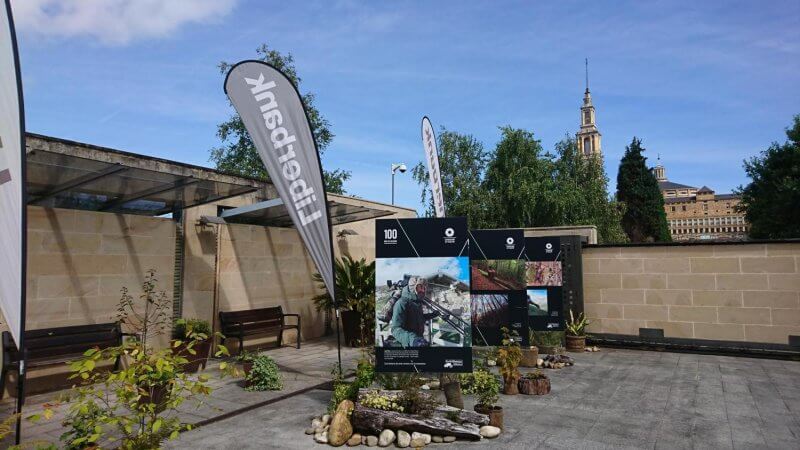
Useful tips for users:
- Along with the purchase of a ticket, tourists are given a map of the botanical garden. Even if it’s in Spanish, it’s still easier to navigate the area with it.
- At the entrance to the botanical garden there is a small shop with interesting books about local plants-tourists are advised to buy one of the copies.
- Be sure to wear comfortable shoes – the park covers an area of 16 hectares, and visitors to the botanical garden will have a long walk.
Practical information:
- Location: Av. del Jardín Botánico, 2230, 33203 Gijón, Asturias, Spain.
- Opening hours: 10.00-19.00.
- Price: 3 euros for adults, 2 euros for children and seniors.
Cape Santa Catalina
Santa Catalina is a promontory in the northern part of Gijon, famous for its hill (with beautiful views of the city) and port. The central part of the peninsula is the Cerro de Santa Catalina, a high stone wall that used to protect the ancient fortress from enemy raids.
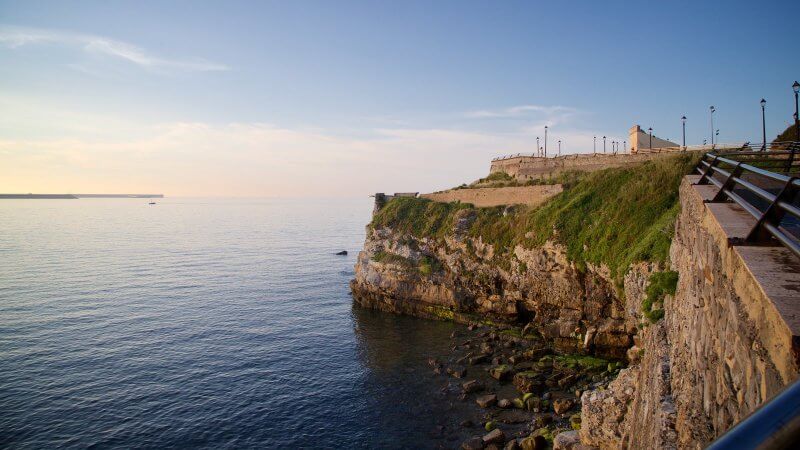
The main attractions also include the chapel of the Sailors ‘ Guild and an old building on the ocean.
However, all of the above attractions are far from the most important. Most tourists go to this part of Gijon in order to visit the hill of the same name – from here you can enjoy an incredible view of the ocean. Also on the top is a sculpture with the symbolic name “Compliment to the Horizon”.
Barrio de Cimadevilla
Cimadevilla is the main district of Gijon, located in the heart of the city. In fact, this is the Old Town, where you can see the ruins of walls and baths built during the Roman Empire. Most of the surviving buildings date back to the 15th and 16th centuries.
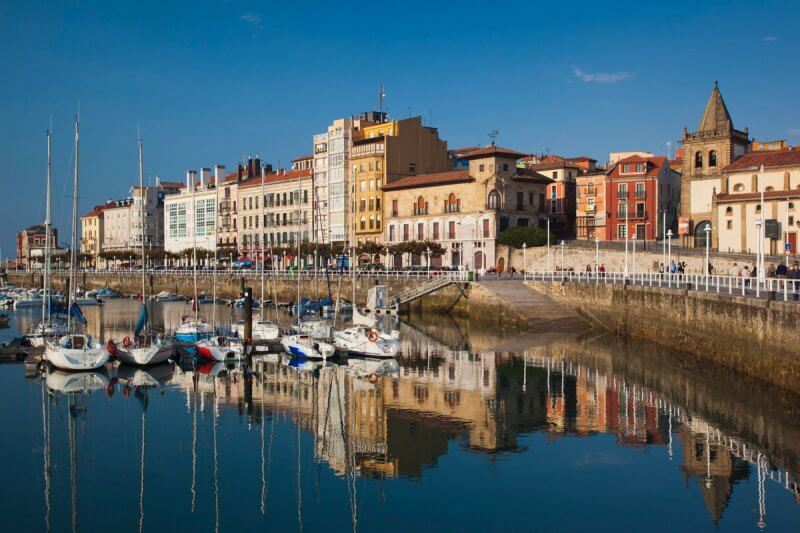
The area is located on the Santa Catalina Peninsula (the port is also located here), and almost all local residents are sailors. Tourists love this area for its unique atmosphere and beautiful views from the hill.
Oceanarium (Acuario de Gijon)
The Gijon Aquarium is the only one in Spain where you can see all 5 groups of vertebrates. The attraction was opened in 2006, and the exposition is regularly updated.
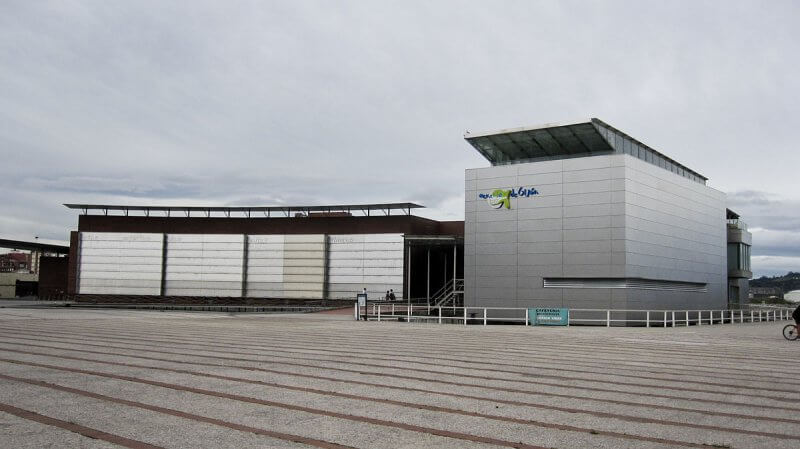
The aquarium is divided into 12 zones, each of which corresponds to a specific river or sea. This makes it very easy and interesting to perceive information:
- Bay of Biscay.
- Rivers of Cantabria. Cantabria is a province in northern Spain, famous throughout the country for its picturesque streams and full-flowing rivers.
- The Atlantic Ocean is home to dolphins, sperm whales, and porpoises.
- The North Sea. In this part of the exhibition you will see shrimp, trout fish, salmon and shellfish.
- Coral reefs are the brightest and most beautiful part of the aquarium.
- The Red Sea. This part of the aquarium will introduce you to jellyfish, moray eels, stingrays and sharks.
- Indian Ocean. Here you can see giant turtles.
- The Pacific Ocean is home to penguins, octopuses, sea turtles, and giant squid.
- The Arctic Ocean is a habitat for herring, cod, and sea bass.
On weekends, the aquarium usually hosts seminars for children and master classes. Anyone who has purchased a ticket can visit them.
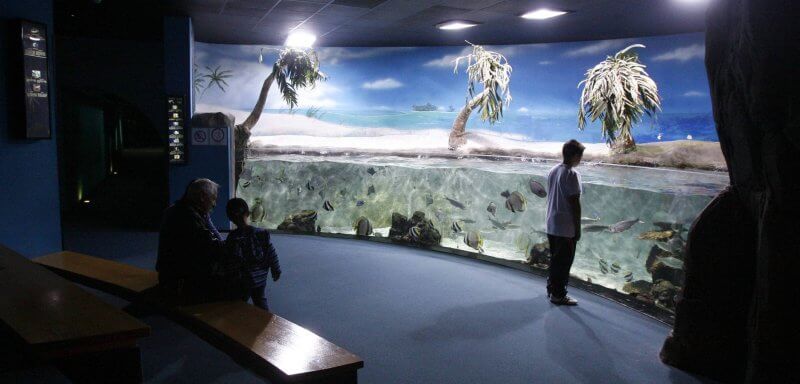
Tourists speak very well about the sights-they note the good service, the absence of queues and the incredible beauty of the underwater world. Visitors consider the outdoor pools to be a significant plus, where you can look down from above and actually touch the sea inhabitants.
- Location: Playa De Poniente, S / N, 33212 Gijón, Spain.
- Opening hours: 10.30-18.30.
- Price: 15 euros for adults, 12 euros for children and seniors.
Beach (Playa de San Lorenzo)
San Lorenzo is the only beach in Gijon that meets all security requirements. The surface is sandy, but there are no rocks or shells. Since Gijon is a port city, debris and foliage are often found in the water. The entrance to the water is gentle – the place is well suited for families with children.
Its length is about 1.5 km, and its width is at least 60-70 meters. There are always a lot of people on the beach, but there is enough space for everyone to relax in comfort. On some days, the waves rise quite high, so the beach is also loved by surfers.
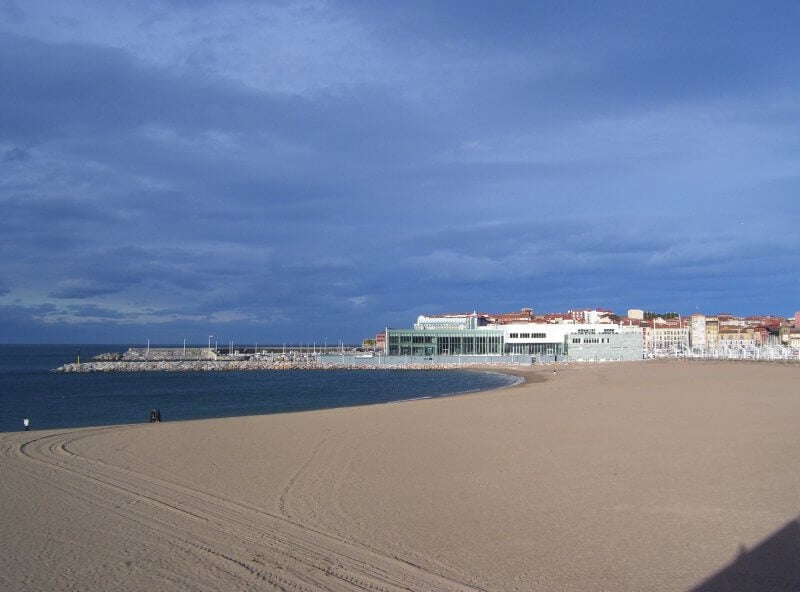
Please note that the view of San Lorenzo Beach varies greatly throughout the day. Due to the tides, the beach looks like a long and wide strip of golden sand in the morning, and in the evening it completely disappears.
At approximately 16.00-17.00, those who swim in the sea are asked by beach workers to get out of the water and watch the low tide from the shore. Warning signs are installed on the beach, and many lifeguards are vigilant to ensure that no one enters the water.
As for the infrastructure, only toilets and showers are installed on the beach itself. There is one medical center and there are 4 rescue towers. There are no cafes, restaurants or bars, as the beach is urban, and all the necessary establishments are within walking distance.
Weather and climate

The Atlantic climate in Gijon is one of the most stable and comfortable in Europe, because there are no sharp weather changes and extremely low or high temperatures.
The hottest month is August, and the daytime temperature is +22-23 °C. In January (and this is the coldest month), the thermometer does not fall below +12°C. During the summer months, sea temperatures range from +16 °C in June to +20°C in July and August.
Please note that the humidity in Gijon is always high, so +22°C can feel like +28°C.
Accomodation
There are about 80 hotels and hostels in Gijon – the city is not a tourist destination, so there are very few places to stay. Please note that the room must be booked 2-3 months before arrival.
The average cost of a 3* hotel room in high season for two people varies from $ 60 to $ 80. The price includes a delicious breakfast, a restaurant on the ground floor and free on-site parking. Also, the owners promise that the room will have all the necessary equipment and a beautiful view of the city.
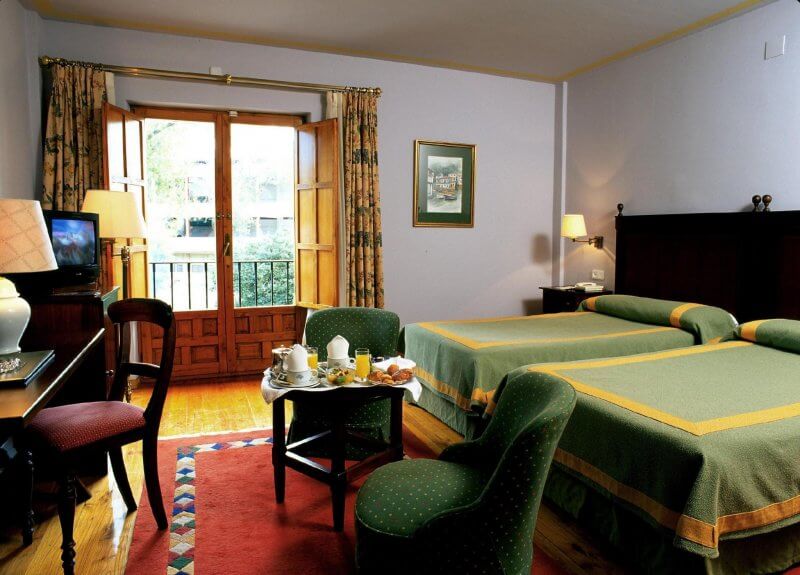
Choosing the right apartment is easier than choosing a hotel – there are about 150 apartments for rent in the city. The average price per night for two people in high season is from $ 40 to $ 60. The price includes all necessary appliances in the room, daily necessities and round-the-clock support from the host.
How to get
Gijon is located on the northern coast of Spain, 870 km from Barcelona and 470 km from Madrid. The nearest major cities are Oviedo (30 km), Aviles (26 km) and Villaviciosa (31 km).
Despite the relative remoteness of Gijon from other Spanish cities, it is not difficult to get to it – buses and trains run regularly. In addition, the international airport is 40 km from the city, which regularly receives flights from Geneva, Barcelona, Prague, Paris, Malaga, London, Ibiza and Brussels.
Bus
Gijon is connected by bus to such cities as: Oviedo, Carreno, Aviles, Madrid, Siero, Villaviciosa, Llanes, Leon. The carrier is usually either ALSA (official website – www.alsa.com), or BILMAN BUS (official website – www.bilmanbus.es).

Train
Rail transport is well developed in Spain, so there will definitely be no problems with how to get to Gijon. You can get to the city from almost any large settlement where there is a railway.
In fact, the only railway carrier in Spain is RENFE. On the official website (www.renfe.es)you can buy tickets and find out the exact schedule.
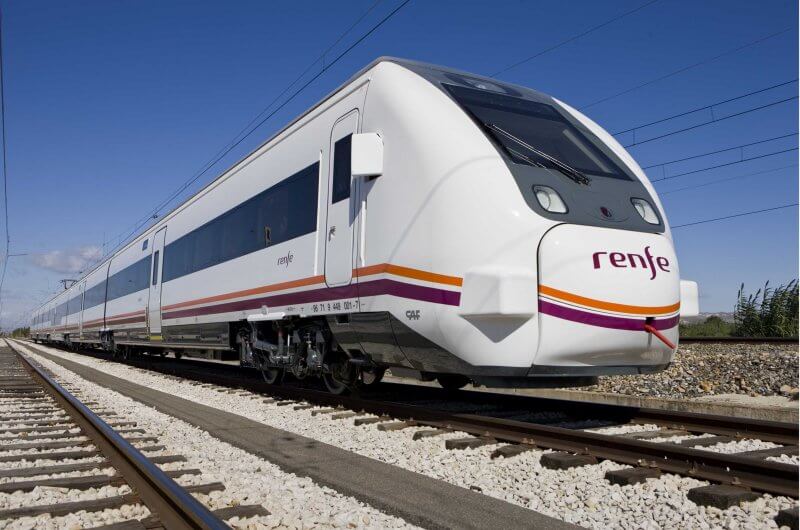
Useful tips
- Be prepared for the fact that all information in museums and the botanical garden is presented only in Spanish.
- The best gift shop in the city is located at the entrance to the botanical garden.
- It is better to book a hotel in Gijon 2-3 months before arrival – the best rooms are quickly sorted out.
- Two days is enough to see all the sights of the city of Gijon (Spain).
Leon, Spain: A Journey Through the ‘Real’ Spain – The Ultimate Guide

